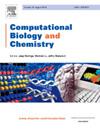基于无监督随机神经网络范式的传染病动力学数学模型。
IF 2.6
4区 生物学
Q2 BIOLOGY
引用次数: 0
摘要
这些病毒已在全球蔓延,影响了人们的社会和经济生活,在全世界造成巨大痛苦。世界范围内的疫情导致数千人死亡,数百万人患病。为了控制冠状病毒大流行,数学模型被证明是分析和确定疾病潜力和严重程度的宝贵工具。这项工作提出并评估了一个确定性的六室模型与一个新的随机神经网络。数值模拟结果与敏感性分析结果吻合,证明了该模型的有效性。此外,通过数值模拟验证了随机神经网络的有效性。通过图表和表格进行了一些调查,说明疫苗接种过程如何有助于减少社会压力。数值模拟还侧重于预防疾病在社区范围内的传播。我们所提出的随机神经网络获得了最小的残差,并与数值求解器进行了比较,以评估所提出方法的准确性和鲁棒性。本文章由计算机程序翻译,如有差异,请以英文原文为准。

Dynamics of infectious disease mathematical model through unsupervised stochastic neural network paradigm
The viruses has spread globally and have been impacted lives of people socially and economically, which causes immense suffering throughout the world. Thousands of people died and millions of illnesses were brought, by the outbreak worldwide. In order to control the coronavirus pandemic, mathematical modeling proved to be an invaluable tool for analyzing and determining the potential and severity of the illness. This work proposed and assessed a deterministic six-compartment model with a novel stochastic neural network. The significance of the proposed model was demonstrated by numerical simulation in which the results are agreed with sensitivity analysis. Furthermore, the efficacy of stochastic neural network has been proven with the help of numerical simulations. Some investigations have been conducted through graphs and tables that how the vaccination process is helpful to minimize stress in society. The numerical simulations also focused on preventing the community-wide spread of the disease. The lowest residual errors have been achieved by our proposed stochastic neural network and compared with numerical solvers to assess the accuracy and robustness of the proposed approach.
求助全文
通过发布文献求助,成功后即可免费获取论文全文。
去求助
来源期刊

Computational Biology and Chemistry
生物-计算机:跨学科应用
CiteScore
6.10
自引率
3.20%
发文量
142
审稿时长
24 days
期刊介绍:
Computational Biology and Chemistry publishes original research papers and review articles in all areas of computational life sciences. High quality research contributions with a major computational component in the areas of nucleic acid and protein sequence research, molecular evolution, molecular genetics (functional genomics and proteomics), theory and practice of either biology-specific or chemical-biology-specific modeling, and structural biology of nucleic acids and proteins are particularly welcome. Exceptionally high quality research work in bioinformatics, systems biology, ecology, computational pharmacology, metabolism, biomedical engineering, epidemiology, and statistical genetics will also be considered.
Given their inherent uncertainty, protein modeling and molecular docking studies should be thoroughly validated. In the absence of experimental results for validation, the use of molecular dynamics simulations along with detailed free energy calculations, for example, should be used as complementary techniques to support the major conclusions. Submissions of premature modeling exercises without additional biological insights will not be considered.
Review articles will generally be commissioned by the editors and should not be submitted to the journal without explicit invitation. However prospective authors are welcome to send a brief (one to three pages) synopsis, which will be evaluated by the editors.
 求助内容:
求助内容: 应助结果提醒方式:
应助结果提醒方式:


